

Damion Smy
GWM Cannon Alpha ute, Tank 300 HEV and Tank 500 recalled
14 Hours Ago
The 7 Series of SUVs proves to be a plush, spacious and capable luxury bus that more than caters for large families and the like.
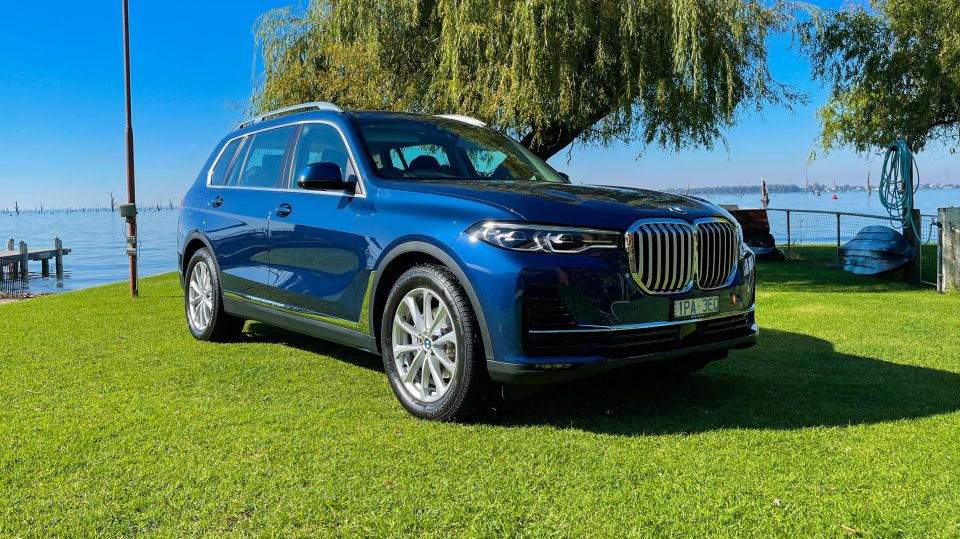


Marketplace Editor
New from
$135,900
excl. on-roads

Marketplace Editor
New from
$135,900
excl. on-roads


Marketplace Editor
New from
$135,900
excl. on-roads

Marketplace Editor
New from
$135,900
excl. on-roads
Quickly see how this car stacks up against its competition. Select any benchmark to see more details.
Where expert car reviews meet expert car buying – CarExpert gives you trusted advice, personalised service and real savings on your next new car.
They say ‘bigger is better’, so I guess biggest is best.
Using that logic, the BMW X7 should be the cream of the Bavarian marque’s successful SUV line-up.
With a bluff, upright design, a massive cabin with seating for seven, and the choice of turbo-diesel or twin-turbo V8 petrol engines, the X7 has all the makings of a favourite among the Toorak set, and has been a relative hit with Aussie buyers since it launched a couple of years ago.
I put the 2021 BMW X7 xDrive30d to the test over the Easter weekend, for my annual road trip to the Victorian and New South Wales border lugging a group of mates, all our luggage and tennis gear.
Is the X7 the ultimate BMW SUV?

Pricing for the 2021 BMW X7 range is as follows:
All prices exclude on-road costs
Our X7 xDrive30d test vehicle had several options and option packages fitted, including:
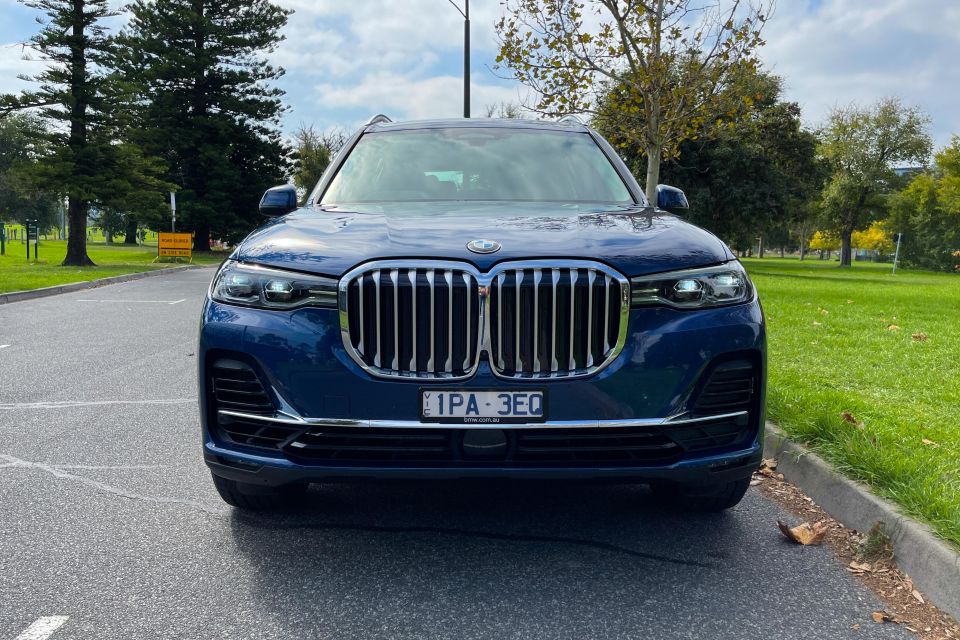
That brings the as-tested price to $142,500 plus on-roads.
The X7’s most natural competitor is the Mercedes-Benz GLS, which in equivalent GLS400d trim is significantly more expensive at $163,000 plus on-road costs.
Other seven-seat luxury SUVs (albeit smaller), include the Audi Q7 50 TDI S line ($121,300), the Land Rover Discovery D300 R-Dynamic HSE ($120,575), and the Volvo XC90 Recharge PHEV ($115,990).
BMW could arguably consider the full-size Range Rover as a rival for the X7, which starts at $201,000 for the entry-level D300 Vogue but doesn’t offer three rows of seating.

Buy your new car without the stress. It's fast, simple and completely free.

Great service from Travis and team, second time I have used this business would not hesitate to recommend them to anyone
Craig C.
Purchased a Ford Ranger in Sunshine Coast, QLD
CarExpert helped Craig save thousands on his Ford Ranger, now let us save you on your next new car.
Find a dealEven as a ‘base’ model, the 2021 BMW X7 xDrive30d comes loaded with equipment.
Specification highlights include:
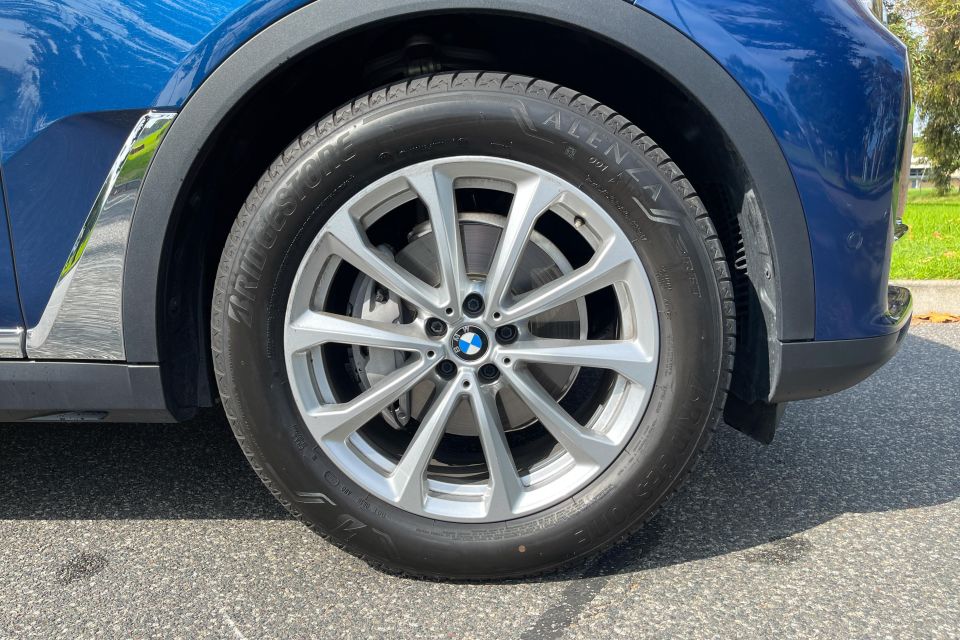
Opting for the flagship X7 M50i xDrive adds stuff like:
There’s also obvious differences in the powertrains too – inline six diesel versus V8 twin-turbo petrol – which we’ll detail in the engine section later.
As is typical for premium vehicles, particularly at the higher end, there’s a range of options and option packages to further enhance the X7’s specification as well as personalise the vehicle to your personal tastes.
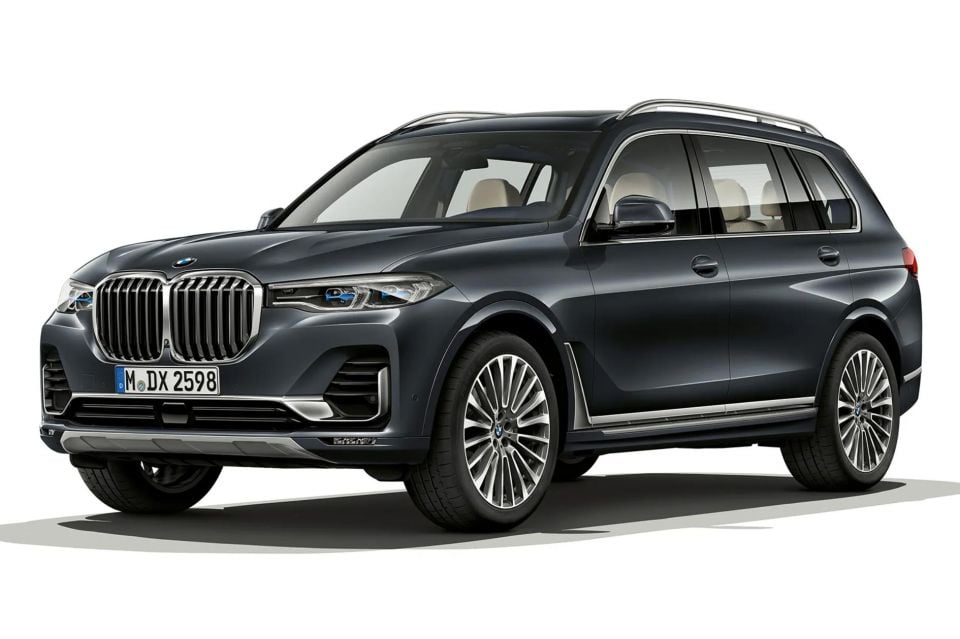
The X7 xDrive30d is available with both the Design Pure Excellence ($16,000) and M Sport packages ($16,000), offering more opulent or more sporting styling and and equipment appointments respectively.
Highlights of the Design Pure Excellence package include:
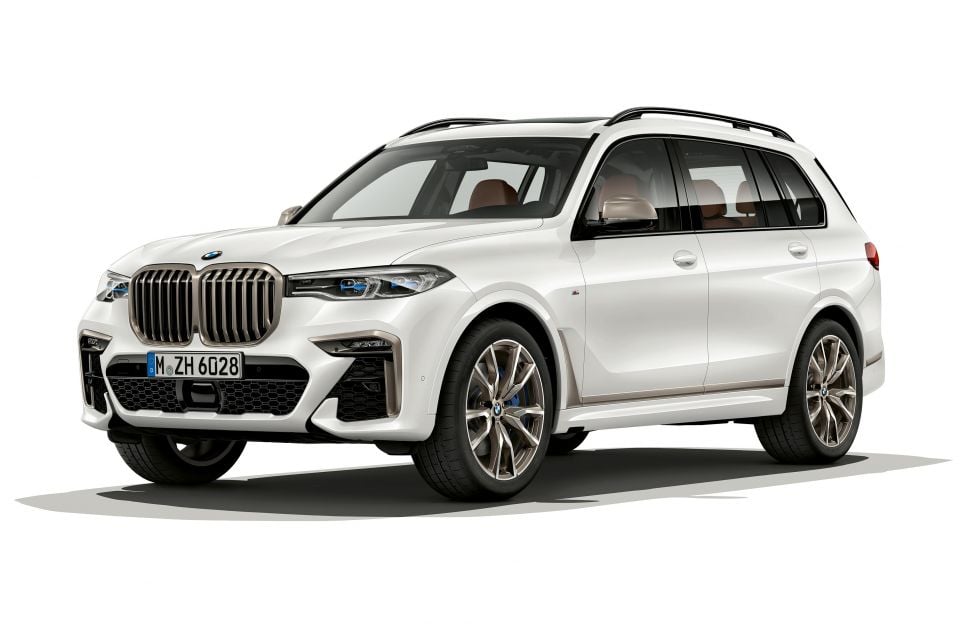
The M Sport Package, meanwhile, aligns the xDrive30d closer to M50i specification:
The xDrive30d can also be had with the xOffroad Package ($4400) which adds more rugged drive modes which toggle ride height, throttle sensitivity and shift points, as well as bringing extended underbody protection and a mechanical differential lock.
The Indulgence Package ($6600) available on all X7 grades brings luxurious items like active seat ventilation, front massaging seats, glass interior ornamentation and the Sky Lounge panoramic roof upgrade.
You can view the full list of standard features and options using the specification guide on the BMW Australia website.
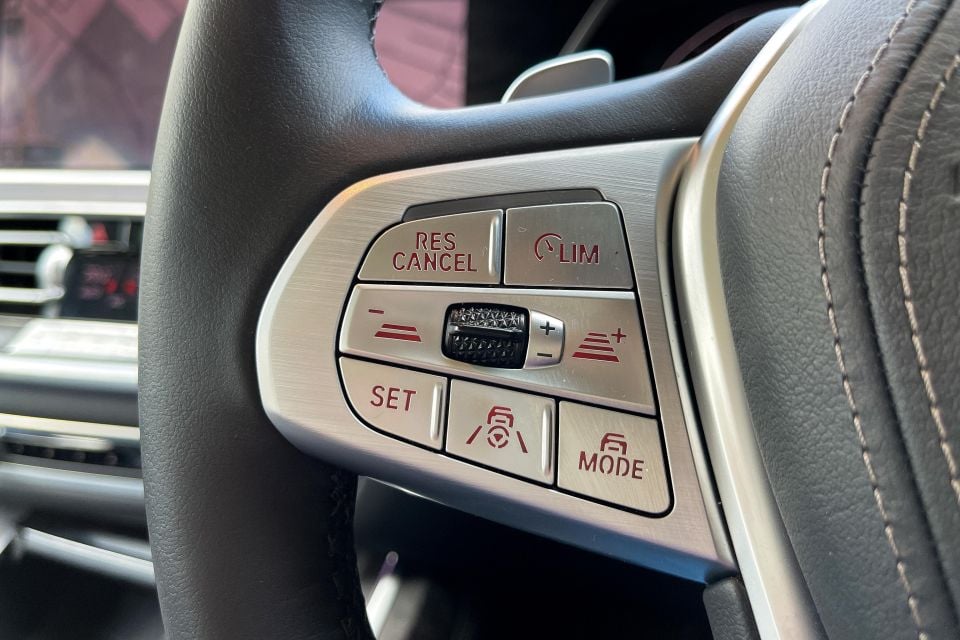
The BMW X7 is yet to be crash tested by ANCAP or Euro NCAP, though its smaller X5 platform mate wears a 2018-stamped five-star rating for 3.0-litre diesel models.
While its crash worthiness hasn’t officially been rated, the BMW X7 comes loaded with the latest active safety, driver assistance and semi-autonomous driving technologies.
Safety equipment across the range includes:
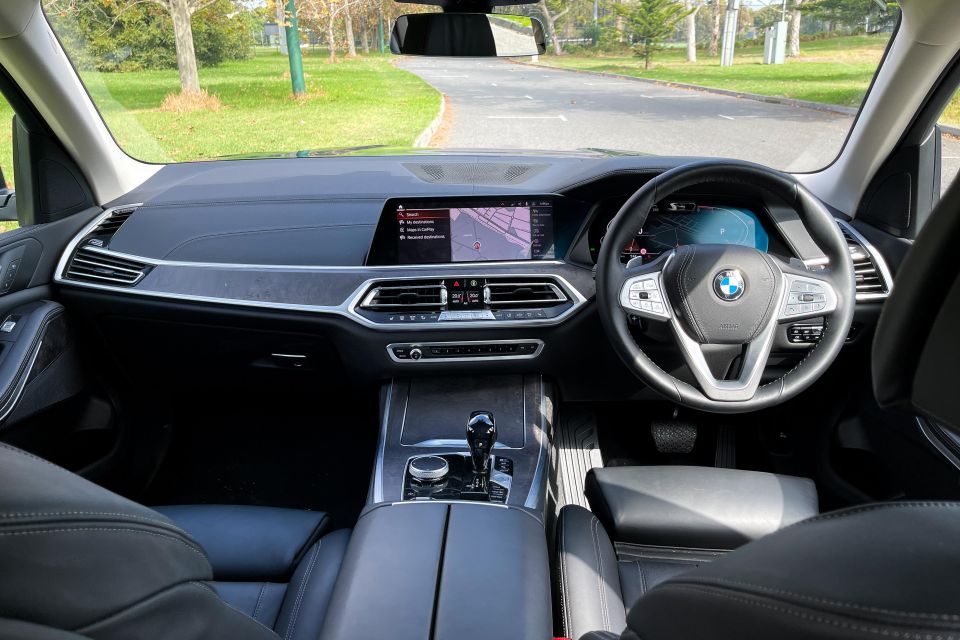
If you’ve sat in a BMW X5 you’ve pretty much sat in the X7 – just multiply everything by about 1.5.
The dashboard, steering wheel, displays and switchgear are more or less the same as the smaller X5, as well as other BMW products like the 7 Series. If you’re already a BMW owner this will all be pleasingly familiar.
With that in mind, perceived cabin quality and tactility are top notch. Where some rivals are sacrificing material and build quality in the pursuit of enhanced levels of cabin tech, BMW’s latest range feels built to last with a pleasingly high ratio of soft-touch and leather-trimmed surfaces.
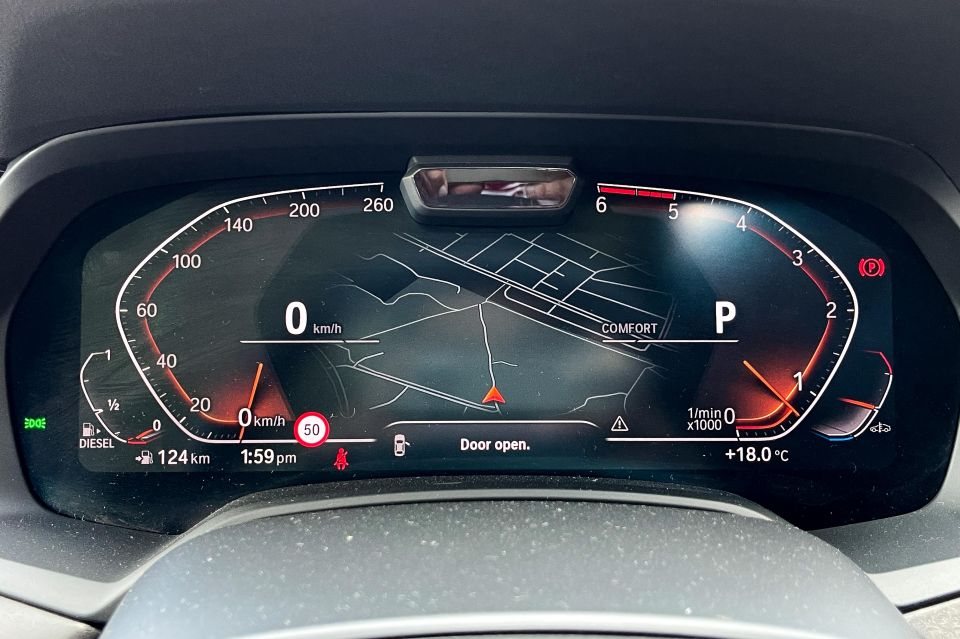

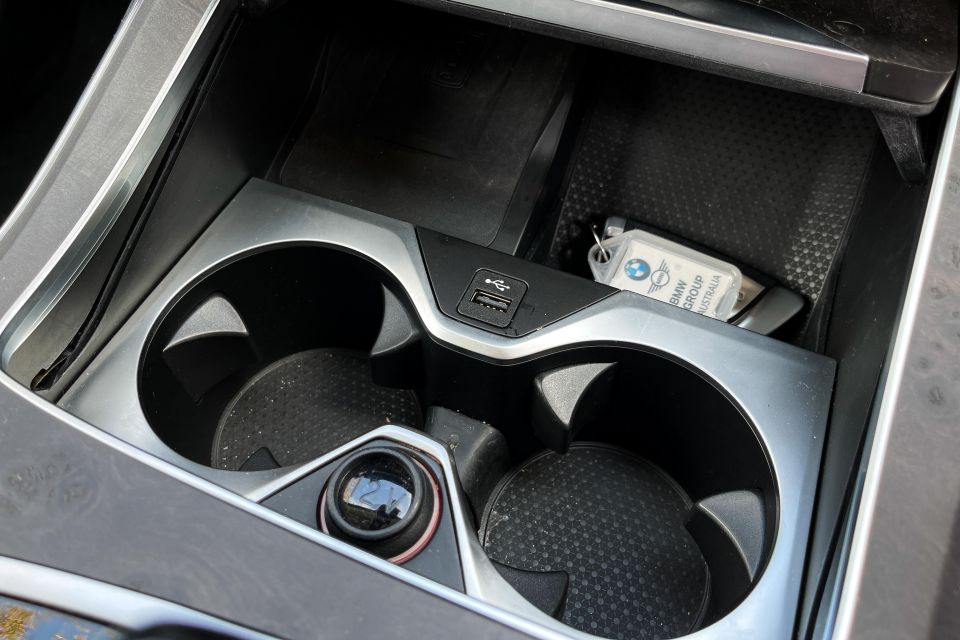
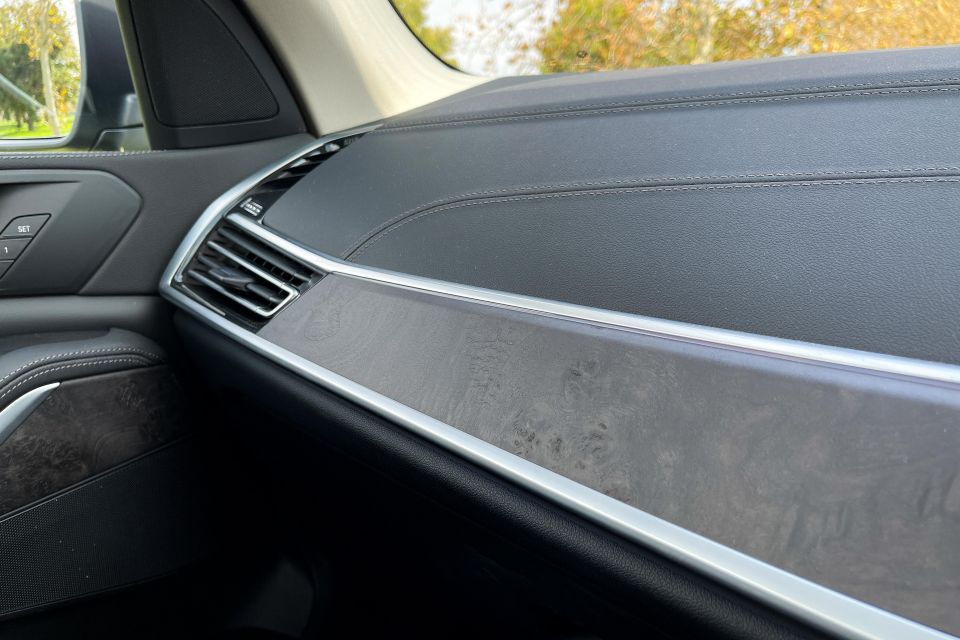
The driver is faced with the standard BMW X steering wheel in the case of our tester, which is leather trimmed but not as smooth or as supple as I would have expected of a flagship model. The 12.3-inch digital instrument cluster is likewise familiar as is the 12.3-inch infotainment display, both running BMW’s current OS7.0 generation of iDrive.
Everything is clear, quick to respond, and easy to use. Placement of the various buttons and switches are ergonomic and well within reach for when you’re toggling various functions on the move, and everything operates with a sense of dampness and fluidity. Nice.
We found wireless Apple CarPlay to work just about flawlessly for the whole time we had the vehicle, with maybe one drop-out during one of our longer rural stints. BMW’s native interface is also first rate, though we’d like more customisability in the digital instruments like Audi and Mercedes-Benz offer.
Space is in abundance up front with an almost van-like level of airiness and spaciousness in the first two rows. There’s full electric adjustment for the driver (with memory) and passenger so that you’re always beautifully comfortable, and the manually-adjustable steering column likewise offers a wide range of adjustment.
There’s a good amount of storage up front too, with a wireless phone charge pad ahead of two cupholders and a small cubby for loose items, a huge, deep centre console storage bin, and deep door pockets with large bottle holders.
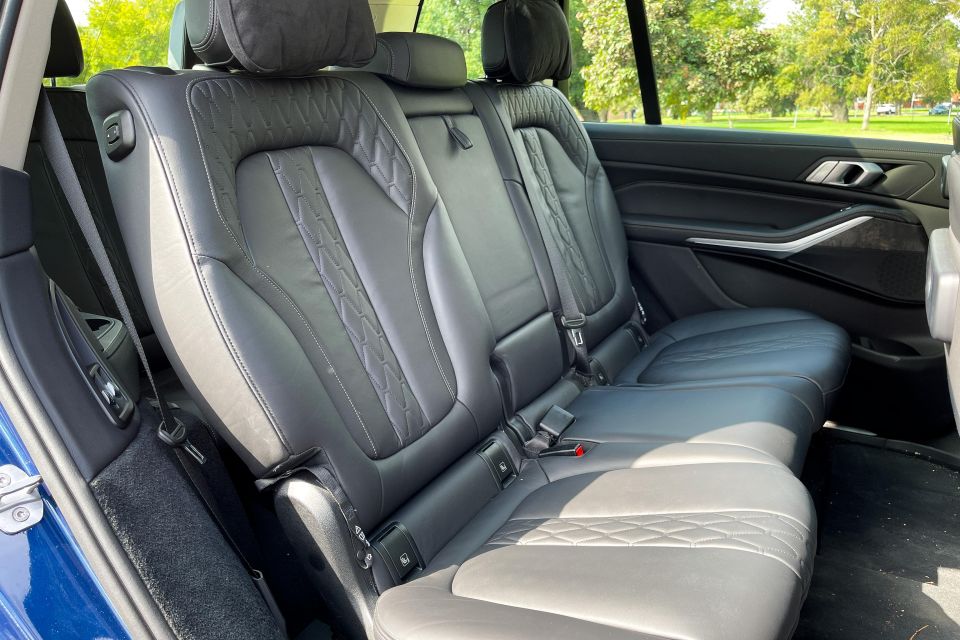

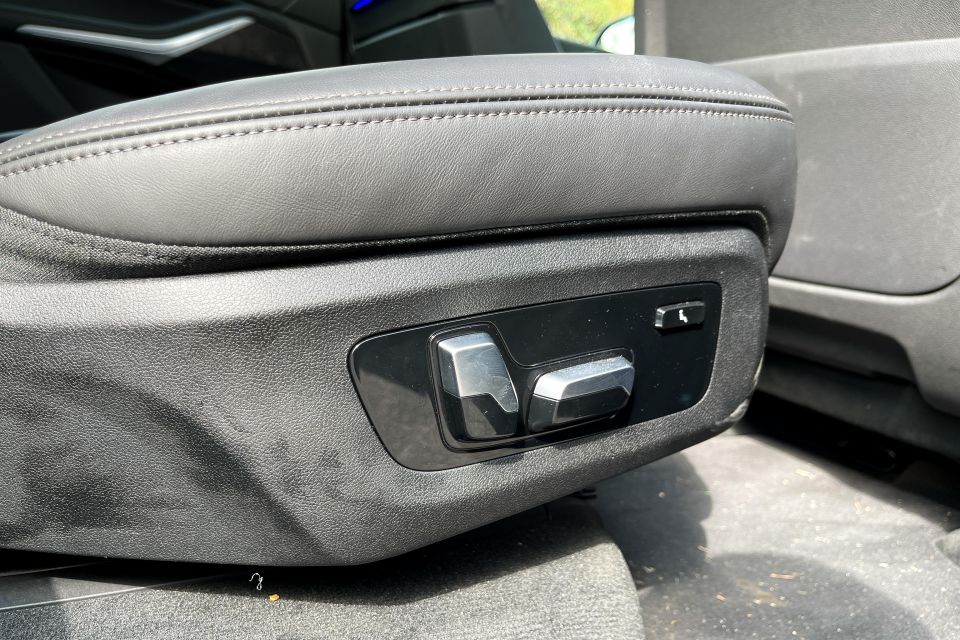
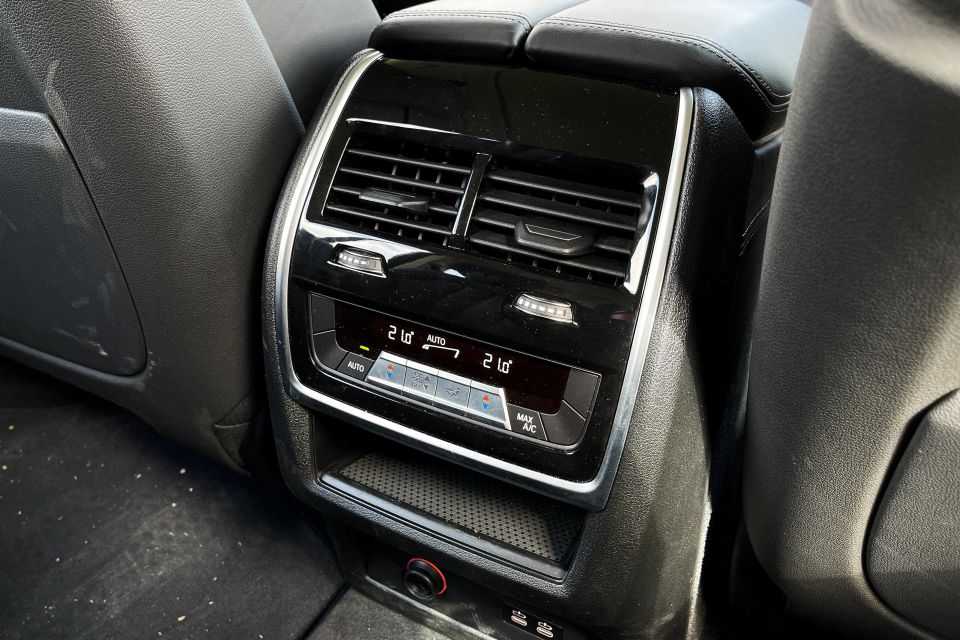
Moving into the second row, there really is that ‘7 Series of SUVs’ feel.
Leg and headroom is plentiful, even excessive. What’s really great about the X7 is that you can also fit three adults across in proper comfort because of its massive width.
The drive up and back to Yarrawonga I carried five people including myself, and no one complained about space.
The second row seats are also electrically adjustable, sliding fore and aft as well as offering a reclining function. Outboard occupants are treated to pillow-like ‘comfort cushions’ on the headrests trimmed in Alcantara suede.
There’s another two zones of climate control back here, as well as a 12V outlet and a pair of USB-C ports for charging mobile devices. Airline style fold-out map pockets are also behind the front seats.
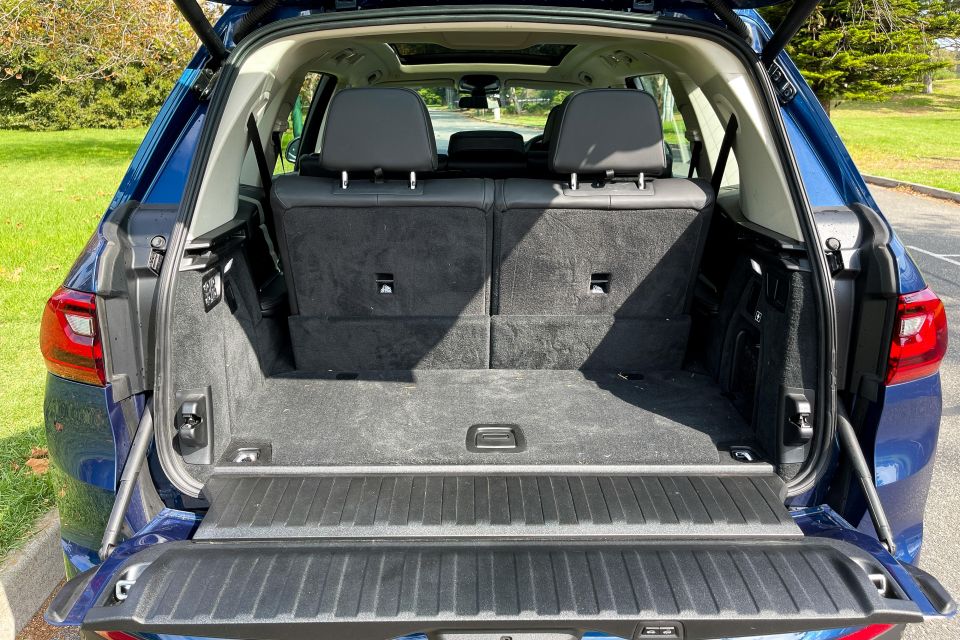

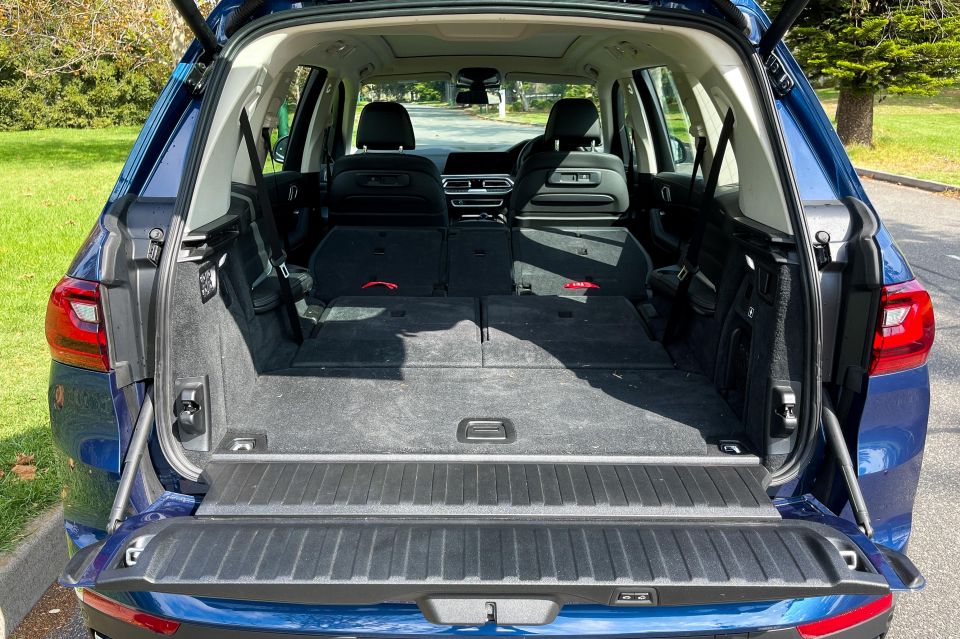
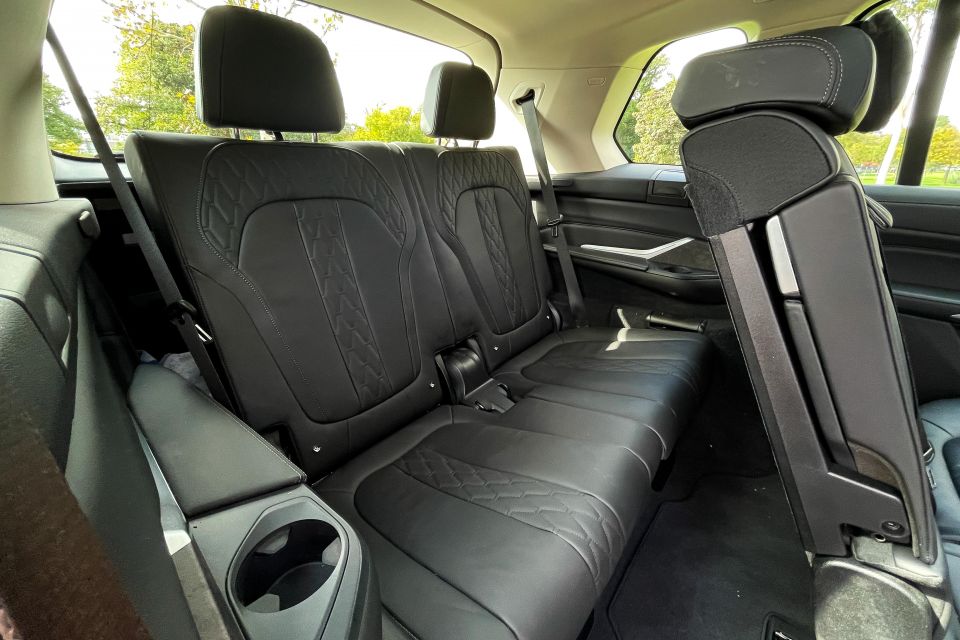
The third row will be a defining factor when comparing the X7 to an X5 with optional third row, or even an Audi Q7. While not as spacious as a fully-fledged people mover, the X7 can certainly accommodate adults for short trips while also offering enough boot space for larger bags or other luggage.
On a few occasions I transported six people with tennis bags to and from our accommodation and the Yarrawonga Lawn Tennis Club, and found the sheer size and practicality of the X7’s cabin to be useful for such a trip.
In the third row there’s also a surprisingly high good number of padded surfaces that make it seem like less of an afterthought. Even I would be happy to sit back there for a little, and I’m 6’1″. You can also option a fifth zone of climate control for the third row if you use it often.
As for boot space, there’s 326L with the third row in use – almost as much as you’ll get in some small hatchbacks – expanding to a massive 2120L with the second and third rows folded.
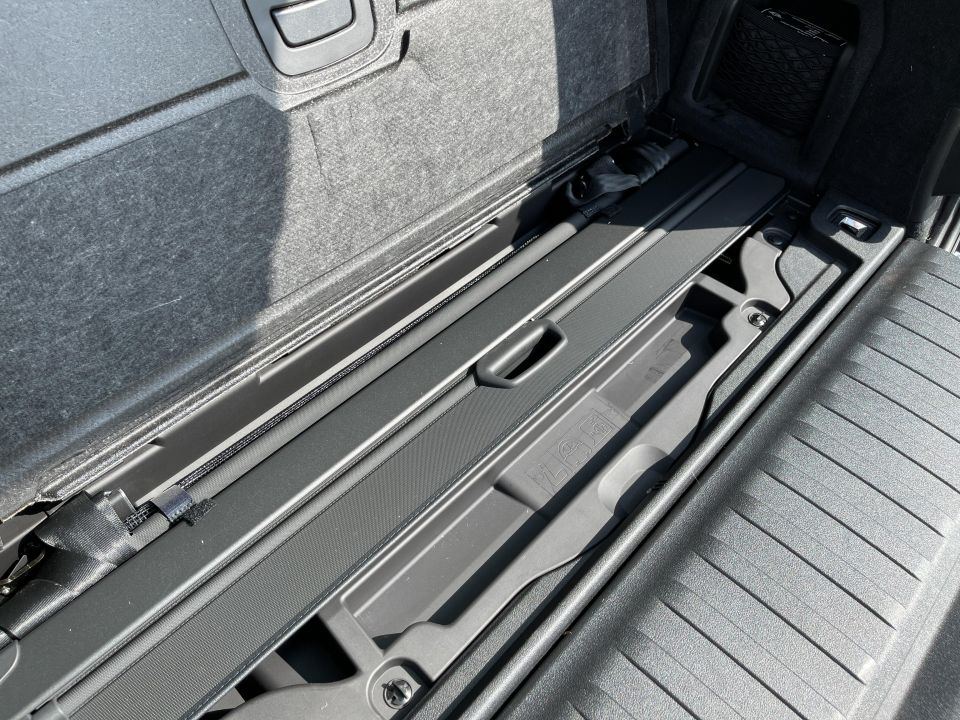
There’s a nifty set of switches in the boot to fold the rear seats up/down, as well as MAX SEATS and MAX LUGGAGE settings which either pop all the seats up at once and adjust the second row to allow for third-row legroom or fold them all down and slide the second row back to make a capacious, flat load bay. You can also lower the rear air suspension so it’s easier to load heavier items.
We did notice, however, that in five-seat form the high boot floor meant the X7 wasn’t as accommodating as you might expect, despite quoting 750L. It just meant a bit of luggage Tetris was required for the road trip.
It’s worth noting the Mercedes-Benz GLS quotes significantly larger load-lugging capacities in all seat configurations – 355L/890L/2400L in seven-/five-/two-seat layouts respectively.
Rounding things out is a storage compartment under the rearmost boot floor to store the luggage blind.
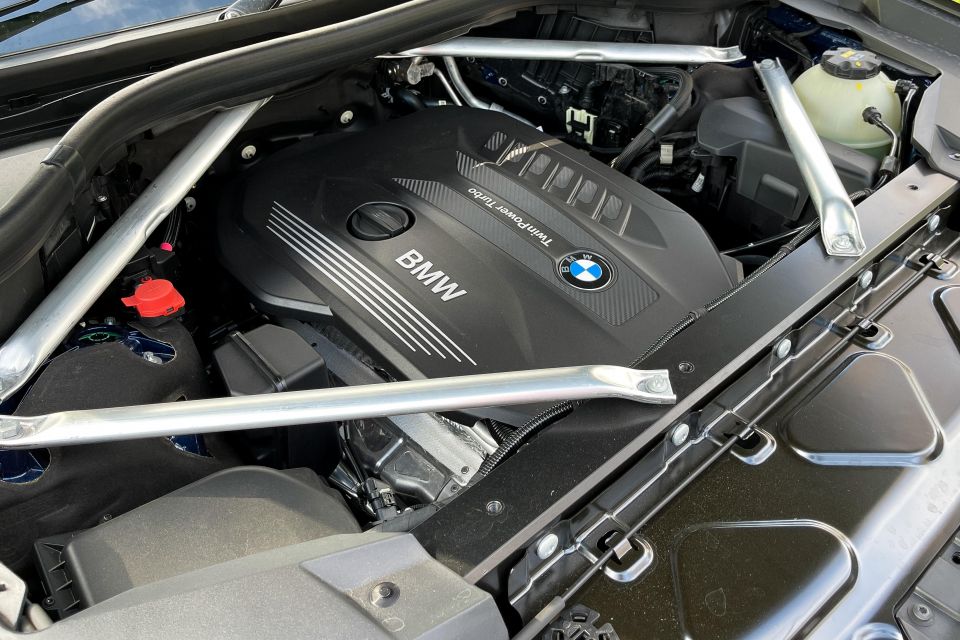
Where expert car reviews meet expert car buying – CarExpert gives you trusted advice, personalised service and real savings on your next new car.
Power in the BMW X7 xDrive30d comes from the familiar 3.0-litre inline six turbo-diesel powering various xDrive30d models in the BMW line-up.
Outputs are quoted as 195kW (4000rpm) and 620Nm (2000-2500rpm), with drive sent to all four wheels (permanent AWD, variable torque split) via an eight-speed ZF automatic transmission.
BMW quotes a 7.0-second dash from 0-100km/h, and a top speed of 227km/h – the thought of this 2370kg seven seater barrelling along at 220km/h is sort of frightening.
Official fuel use is 7.3L/100km on the combined cycle, and we saw an indicated 7.7L/100km after our testing – not bad for a near 2.4-tonne barge carrying a cabin of passengers and luggage.
The fuel tank measures 80 litres, and idle stop/start technology is fitted.
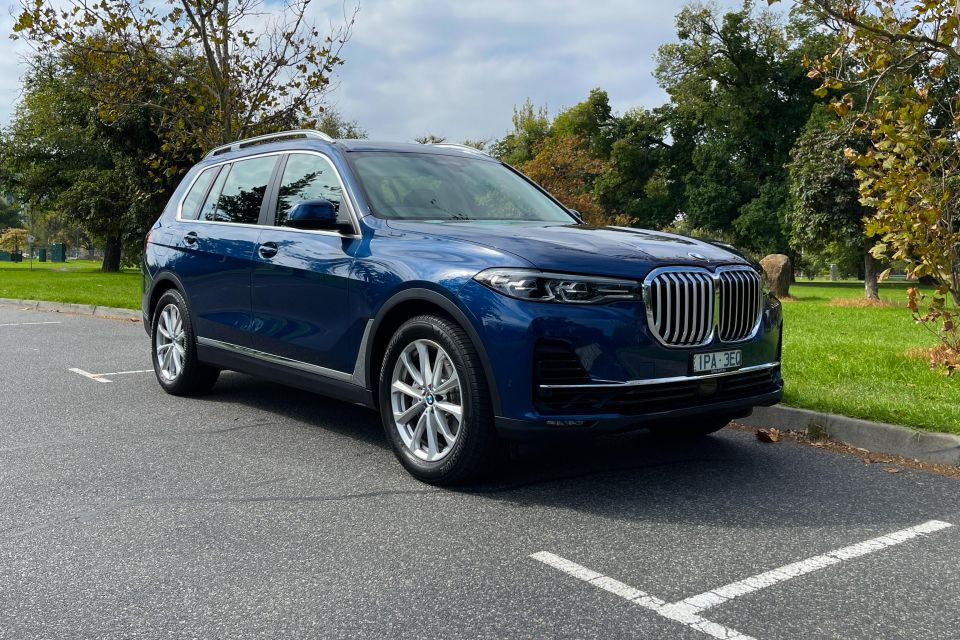
As we’ve noted with various aspects of the X7 experience, there’s a sense of familiarity when it comes to behind the wheel – no doubt due to the shared components and powertrain with other models.
The X7 drives like a big X5, really. In case you’re wondering, that’s a good thing, a very good thing.
BMW has really struck a good balance of dynamics and luxury with its SUV crop, particularly the larger ones. The X7 is effortless and comfortable to pilot, and even despite its enormous size it’s surprisingly agile and easy to manoeuvre whether you’re touring between settlements or putting around the ‘burbs.
The 3.0-litre diesel is torquey with heaps of shove down low while staying refined even when you plant your right foot. You’d almost be fooled into thinking it’s a petrol from the inside.
Couple that effortless performance with light, yet accurate steering and you’ve got an essence of ‘Ultimate Driving Machine’ though obviously the size and nature of the X7 means it doesn’t feel like an M3.
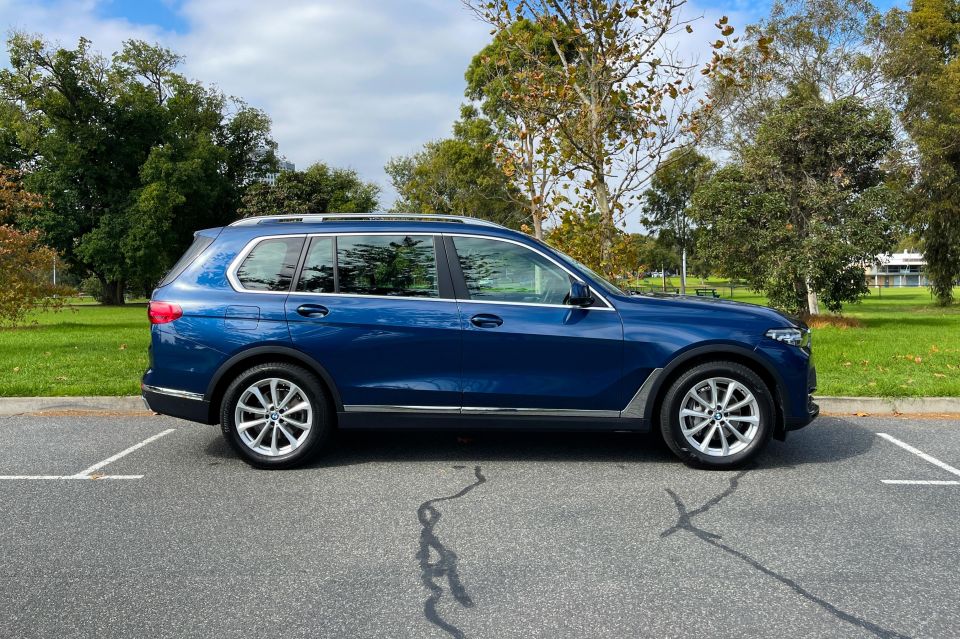
Being so long, tall, and wide means there’s extra considerations you need to take when negotiating tight streets or carparks, because the controls may trick you into thinking you’re driving something smaller.
The adaptive air suspension is wonderful. In its Comfort setting, it glides over the pimpled roads of inner-city Melbourne without sacrificing body control. There’s a touch of firmness on sharper hits but with the smaller standard wheel/tyre combination of our tester it was never uncomfortable or intrusive.
We touched on engine refinement earlier, but the whole vehicle is a hushed and relaxing place to spend time regardless of which seat you’re in. Road and wind noise are kept to an absolute minimum. On rougher sections of the Hume Freeway I was able to maintain conversation with my rear passengers even with music playing at 110km/h.
Speaking of the open road, the X7 truly comes into its own at freeway speeds.
It doesn’t matter what surface, what speed or what time of day, you’re going to love open road touring in this car. The ride settles beautifully into wafty bliss, the diesel engine hums away in eighth just above idle, and there’s little intrusion from the elements.
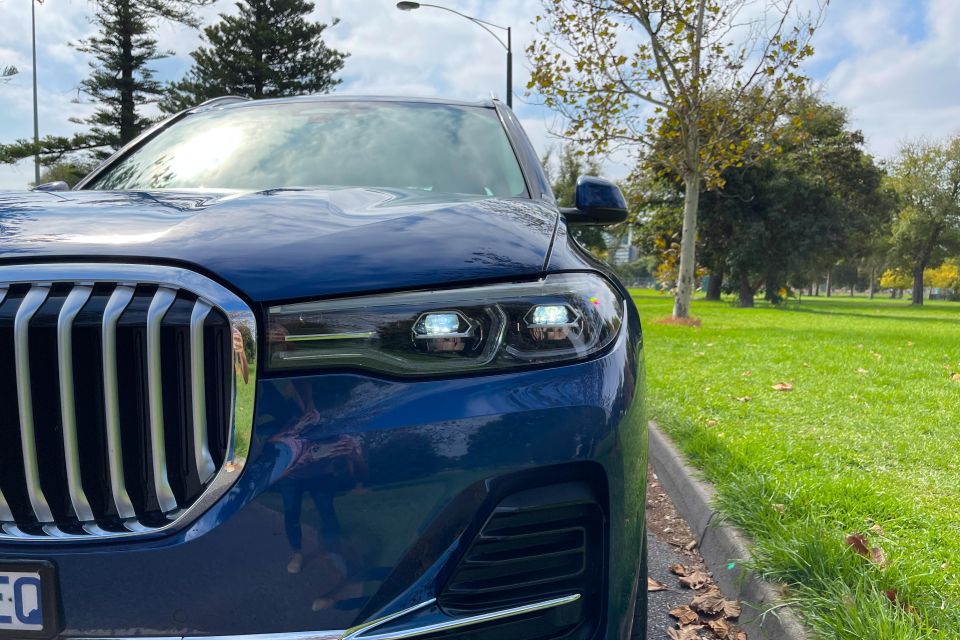
You’ll even see the indicated fuel readout dip into the sixes and sevens, which is madness considering how big this vehicle is. It really just eats up the miles.
One of my favourite features in new BMWs is the Steering and Lane Control Assistant, which is essentially a semi-autonomous highway drive mode that combines adaptive cruise and active lane-centring functions.
The X7 can essentially drive itself in this mode, and does an admirable job at detecting line markings at all times of the day irrespective of light conditions. There was the odd occasion it was caught out, but it’s one of the best systems of its type available at the moment.
Further, you get a cool display in the instrument cluster when using this mode, which is much like the one you’ll find in a Tesla. There’s an X7 in the centre showing different line markings and other vehicles ahead of you.
The standard LED headlights with high-beam assist came in very handy on parts of our road trip, particularly on pitch black rural roads. Illumination was strong and the high-beams significantly improved forward visibility.
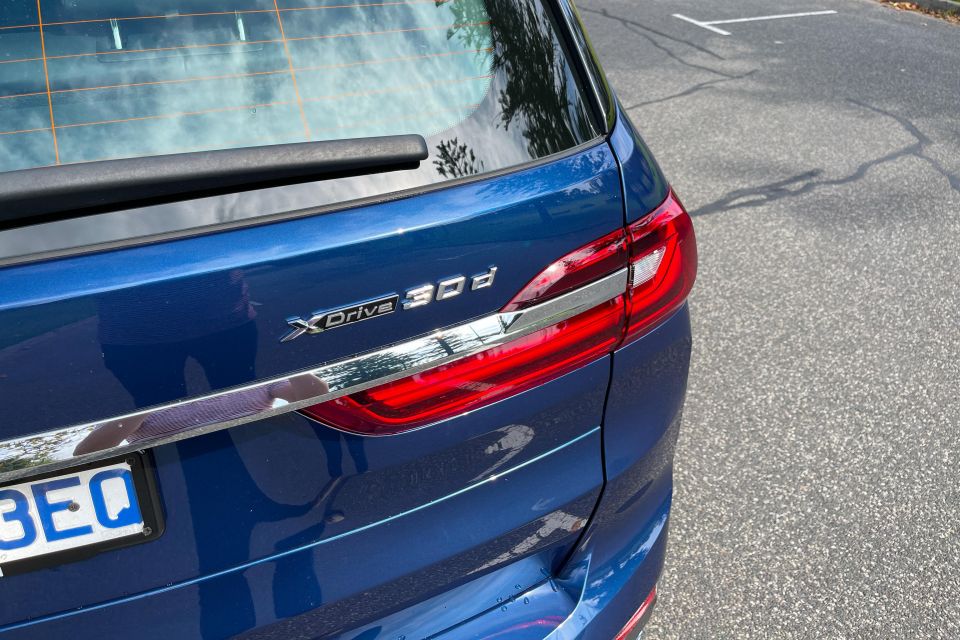
The BMW X7 is covered by a three-year, unlimited-kilometre warranty with roadside assistance for the same period.
With rival brands like Genesis, Mercedes-Benz and Volvo moving to five-year coverage, it’s disappointing BMW hasn’t hopped on the bandwagon.
There’s the BMW Service Inclusive Package for scheduled maintenance, which covers up to five years/80,000km. For the X7 this costs $2300.
An all-inclusive Plus variant of this pack, which includes replacement of wiper blades, brake pads and brake discs, is $6380 covering the same period.
If the pre-paid package isn’t for you, the X7 like all BMWs doesn’t have set intervals, rather Condition Based Servicing that uses vehicle sensors to determine when maintenance is required.
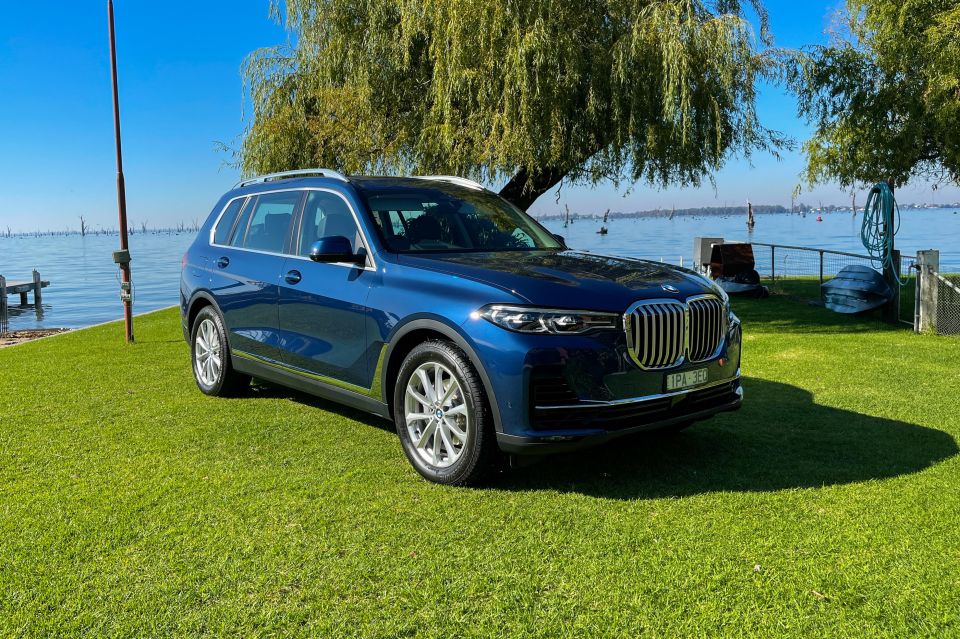
Regardless of whether you love or loathe the bluff styling, the BMW X7 is no pretender when it comes to offering a luxurious experience for you and your family.
If you’re planning on carrying three or more people often, and want to do so in comfort and luxury, the X7 offers tangible practicality benefits over an Audi Q7 or BMW X5 while also being a fair bit more affordable than a Mercedes-Benz GLS.
While the Mercedes-Benz offers more space, the BMW feels better built, more nimble, and more responsive, while also including similar if not better levels of standard equipment.
And, the looks might just grow on you.
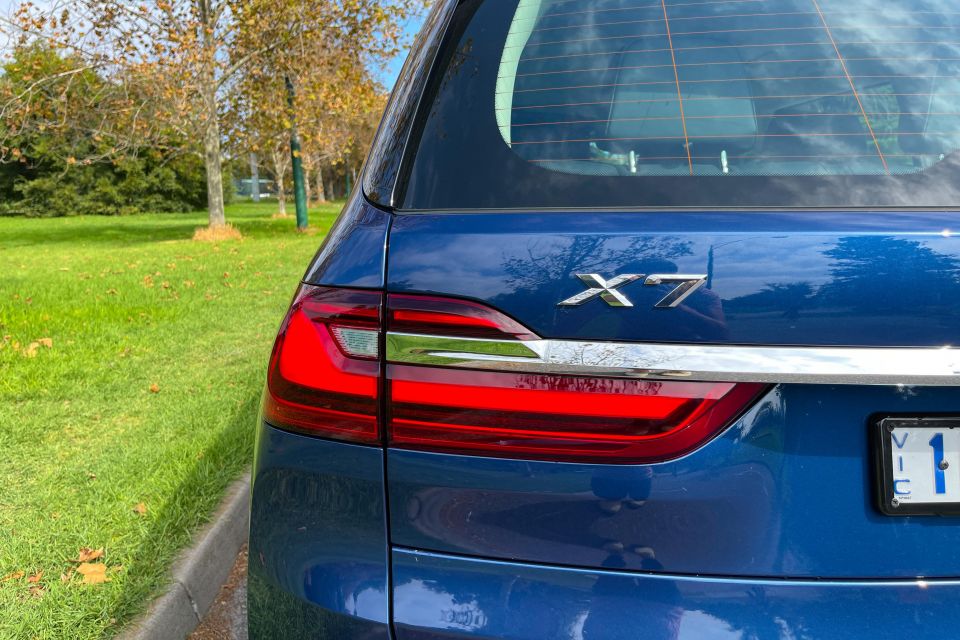
Click the images for the full gallery
Where expert car reviews meet expert car buying – CarExpert gives you trusted advice, personalised service and real savings on your next new car.
James Wong is an automotive journalist and former PR consultant, recognised among Australia’s most prolific motoring writers.


Damion Smy
14 Hours Ago


Josh Nevett
4 Days Ago


CarExpert.com.au
5 Days Ago


Damion Smy
7 Days Ago


Derek Fung
7 Days Ago


Ben Zachariah
10 Days Ago